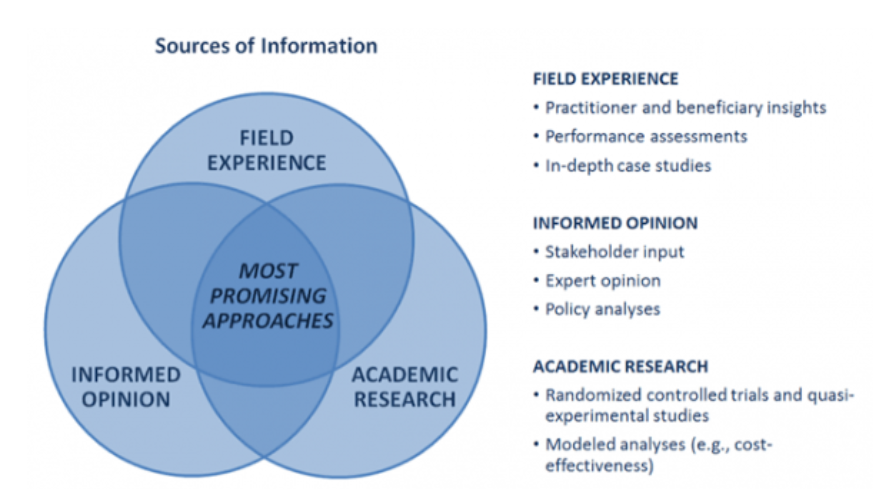How to Achieve The Most Good
“How do I spend my money so that it does the most good?”
This is a question that a lot of donors are thinking as the holiday season approaches. This question is also at the heart of The Center for High Impact Philanthropy’s origin and mission.Founded in 2006 as a collaboration between the University of Pennsylvania’s School of Social Policy & Practice and Wharton School of Business, The Center for High Impact Philanthropy is focusedon bringing together the business and social sector to gain a better understanding of nonprofits who are producing “high impact,” and actionable ways to engage with these nonprofits. Good Measure was lucky enough to have Founding Executive DirectorKatherina (Kat) Rosqueta as the keynote speaker at our Good Measure 2019 Culminating Event. She described how foundations and other philanthropic organizations, as well as donors and funders, are always looking to better understand and evaluate nonprofits. And as nonprofits, we care about improving our communities. We all want to invest in good programs and nonprofits who are doing high-impact work.As nonprofits, we’re asking a similar question: how do we ensure that our programming is doing “the most good?”Kat outlines a practical approach to practicing high-impact philanthropy, and it’s centered on data. Her insight is helpful for individual givers, as well as nonprofit professionals and funders.
1. Focus on Social Impact
Kat defines social impact as creating “meaningful and positive change in the lives of clients and beneficiaries.” This definition may seem obvious as the idea of investing in programs that are doing “meaningful and positive” work isn’t ground breaking. However, when becoming involved with philanthropy, you should take the time to understand the social impact a nonprofit is achieving and make that your priority (versus other concerns such as maximizing tax benefits or honoring a loved one).Unfortunately, not all programs are actually achieving a desired positive impact and that leads into the next three areas to consider.
2. Re-Think the “E-Word” (Evidence)
Sources of Information
The terms “evidence-based” and “research-driven” are often used to describe nonprofit programs that have conducted a randomized controlled trial study to prove a causal link demonstrating social impact (see definition above!). However, this formal, scientific measure is not a realistic expectation for all nonprofit programs. She argues that just because a program is not “evidence-based” doesn’t mean it’s not effective.Kate advises us to “rethink the e-word.” She encourages funders and nonprofits alike to consider “evidence-informed” as a gauge for program effectiveness. This can be done in a variety of ways: academic research, informed opinion, and field experience to identify and measure the observed results of a program.
3. Get More Bang for Your Buck
It’s important to start by saying that this measure of effectiveness is not about the overhead ratio. Nonprofits need to spend money on finances and operations, and that does not mean that donors and fundersaren’tgetting a “bang for their buck.” Instead, Kat suggests that investing in nonprofits can have a multiplicative effect that extends a donor’s dollar and reach. Given what you’re spending or funding, what are you achieving?For example, if you were to do a canned food drive and you collected 100 cans, it would supply food for families and have a general positive impact. However, if instead you give money to a nonprofit food bank, the organization uses those dollars to do even more good. By using economies of scale, partner relationships and a broader reach, effective nonprofits can leverage donations to multiply the impact of individual funds.
4. Always Be Measuring and Managing
Nonprofits need to continuously improve and reflect on whether their programming is “doing the most good.” At Good Measure, we tout the practice of regularly collecting and using data. Talk with beneficiaries and stakeholders, review and analyze data, find what’s working and what’s not. Strive to do better, ask tough questions, learn from mistakes and innovate. For those looking to invest in a nonprofit, it’s important to see this iterative process as a positive step toward “doing good.”
Implementing High-Impact Philanthropy
As part of the social sector, we’re passionate about doing good and meaningful work in the community. We care about our clients and so we need to care about these values. In addition, we want to communicate these values with donors who also care about social impact.
Tips for Donors and Funders:
Be curious and inquisitive about the organizations to which you want to donate.
Understand the positive impact (or reduction of negative outcomes) that an organization is striving for.
Consider all types of evidence that a nonprofit can provide.
Consider the multiplier effect that an organization has on the funds you give.
Make the link between cost and impact
Look for a culture of learning and reflection
Check out the Center for High Impact Philanthropy’sresources for giving effectively, including the 2019 High Impact Giving Guide available just in time for end of year giving
Tips for Nonprofits:
Gain clarity around program outcomes and intended social impact.
Educate funders about the value of an “evidence-informed” approach to evaluation and research.
Articulate the academic research that drives our programs, and the observed success such as client surveys.
Drive organizational improvement and strategy by rethinking impact.
A common limitation of impact is who gets to determine the definition. Be sure to include the beneficiary voice.



